Economic Generativity*
For three decades, the “Entrepreneurial Capital” of the world has thrived in Silicon Valley, California, with the “Generation–Innovation–Venture Capital–Initial Public Offering (IPO) Cycle” generating new wealth, commercializing innovation, and creating new companies and industries while spinning off millions of new jobs. This “Cycle of Generativity” is self-perpetuating: entrepreneurs generate new ideas, form teams, innovate and plan, and pro-mote the ideas to venture capitalists (VCs). In turn, VCs invest, “start-ups” perform, IPOs are offered. The cycle begins again with the profitability and reinvestment of the companies. The success of this engine in our economy is over, under assault by legislators and regulators who do not understand the fragile nature of Generativity. In the name of “fairness,” all governmental agencies have put Generativity at risk.
These are The Generativity Functions in operation: the Generator generates “breakthrough ideas;” the Innovator transfers the ideas to the marketplace; the Commercializer commercializes the ideas to maximize profitability. These are the critical phases of Economic Generativity, the culminating mission of the Generativity Cycle.
This, then, is the Generativity Cycle. Beginning with Community Generativity, Individual and Organizational Generativity are nested in the community which is the generator of New Capital Development:
- Marketplace Capital or positioning for comparative advantage;
- Organizational Capital or productive alignment with positioning;
- Human Capital or generative processing to implement alignment;
- Information Capital or information modeling to implement processing;
- Mechanical Capital or mechanical tooling to implement modeling.
Together, these New Capital ingredients provide the building blocks for Cultural Generativity.
*Carkhuff, R. R. Economic Generativity, Chapter 7. Saving America. Amherst, MA: HRD Press, 2010.
In turn, Cultural Generativity is empowered by networks of Generative Communities capable of generating New Capital. What holds these communities together are the Freedom Functions that culminate in Cultural Capital Development:
- Cultural Relating, which relates the communities collaboratively and interdependently;
- Participative Governance, which empowers the communities to democratic and enlightened governance;
- Free Enterprise, which empowers the communities to entrepreneurial and capitalistic enterprise.
Together, the Freedom Functions provide the foundation for the spiraling benefits of “The Pillars of Civilization”—Peace, Participation, and Prosperity.
Finally, Economic Generativity is founded by networks of Generative Cultures. Economic Generativity culminates in Economic Capital Development:
- Generativity which creates breakthrough ideas and architectures;
- Innovation which transfers these architectures into products and services dedicated to marketplace functions;
- Commercialization which markets and sells the products and services, yielding productivity and profitability in the marketplace.
Together, these Economic Functions define the mission of a continuously changing and growing marketplace.
In sharp relief, then, the mission of Economic Generativity is very simple:
Economic functions are achieved by cultural components which are empowered by community processes.
Together, all of these dimensions process interdependently and synergistically to generate explosions of wealth heretofore unknown to humankind.
The only real obstacles are those brought about by the reinforcement schedules of our consumer-driven culture:
- We have been positively rewarded to expect comfort and even luxury in our buying habits.
- We have been extinguished by neutral responses to our working habits.
- We have been negatively reinforced by punishments in our “producing initiatives.”
In other words, our consumer-driven culture has inverted the reinforcement schedules for an Economic Recovery.
Clearly, we can already see that the socialistic system undermines the operation of The Generativity Cycle. After an average of hundreds of Individual Public Offerings (IPOs) per year over the past three decades, there have been only six IPOs from Silicon Valley in 2008, or two percent of the filings of an average year. Our choices are clear:
- Assume a static marketplace and “teach our children Mandarin.”
- Assume a changing marketplace and “teach our children Generativity!”
Generativity Positioning Systems
The Generativity Economy begins with positioning. Without positioning, the organization or economy cannot gain or maintain comparative advantage over others in the marketplace. Another way of saying this is that positioning differentiates our economy’s unique contributions.
However, in today’s world, we cannot talk about positioning as simply differentiating ourselves from our competitors. Compe¬tition is the function of static resources and independent attitudes. Independence and competition, as we once practiced it, will not work any more.
Today, we position as interdependent partnerships with nearly everyone: customers, customers of customers, vendors, suppliers, and, yes, even entities that we might still consider “competitors.” Collaboration is the function of interdependence. Today, position-ing differentiates our interdependent collaborative contributions.
All business policymakers will concede that the success of a corporation begins with its positioning in the marketplace. Yet all of these top executives also will admit that they were never taught “positioning.” Many employ “legacy positioning” by “sticking to the knitting” and adding new, related product- and service-lines. Others employ “existential positioning” by “cleaning the slate” and entering those markets with highly-leveraged opportunities.
There are many other strategies in between these extremes—some very personal and idiosyncratic. But none are systematic in positioning their corporations in the marketplace!
One of the great ironies of business is this: we know so much about the technologies we employ to produce our product- and service-lines, but so little about the technologies of the business practices that determine the success or failure of our businesses. That is partly the reason why our business successes are random and seldom replicated.
Increasingly, top executives are driven by fast-changing marketplace requirements. As breakthroughs evolve through the rapid market life-cycle, executives must address the derivative requirements of these breakthroughs. Marketplace requirements are not simply based upon corporate values or executive choices. The marketplace itself “speaks” and its requirements must be understood. With this understanding, corporations take an index of their capacities to address these requirements. Corporations need technological capabilities in precisely the same areas as the requirements.
To enable the corporation to mobilize its technological capacities to address its marketplace requirements, executives must understand the processes of marketplace positioning. All position¬ing to enhance corporate capacities to meet marketplace require-ments is accompanied by implications for placement in the life-cycle of the market.
We must remember: no organization is an independent entity. Our organizations are inextricably linked in generating the “New Market Life-Cycle,” from generativity and innovation through commercialization to commoditization and attenuation. Market¬place positioning must relate customer requirements with producer technologies, all within the context of the New Market Life-Cycle.
Three points are particularly important here:
- First, understanding the requirements of the marketplace is crucial to positioning. In effect, marketplace requirements are the values of the marketplace. This is analogous to career placement: we have our values, and the job has its own values; the values of the job become the requirements of the person. In marketplace positioning, the marketplace values become the organization’s requirements. Our external mission is to position our organizations to meet or to exceed these marketplace requirements.
- Second, gaining the technological capability to meet marketplace requirements is our internal mission. This, too, is analogous to career placement: if we have the right skills, knowledge, and attitudes, we can get the job. Mobilizing technological capacity to meet marketplace require¬ments is the essential function of the organization.
- Third, how we address the requirements of the marketplace with our organizational capacities has implications for our placement in the market life-cycle. Beginning with generativity, possibilities are transformed into marketplace applications by innovation, and culminate in profitable products and services by commercialization. An interdependent partnering relationship among these three phases of the market life-cycle is essential for powerful positioning in the marketplace.
Technological capabilities and marketplace requirements are both “moving targets” in the New Market Life-Cycle. Whatever economy best understands the market’s requirements, builds its technological capabilities, and partners across the market life-cycle is taking the first step toward becoming a “Generativity Organization.”
Armed with the Ideational Image products of our Generative Processing, we may now position our organizations or economies in the marketplace. Our most powerful positioning is to be able to do something no other entity can do.
Generative–Innovative positioning was the historic positioning of the American economy in the latter part of the 20th century. Today, the same positioning requires that we offer “virtual off-the-shelf products” that customers may choose to have tailored to their needs.
The prepotent breakthrough model is the Generativity Positioning and Processing System™ or GPPS™ (see Figure 1). As may be noted, GPPS™ represents and implements Generative–Innovator Positioning in the Marketplace at the highest levels as follows: Generative Positioning Functions are accomplished by Cultural Capital Development (CCD’) empowered by Community Capital Development (CCD) processes.
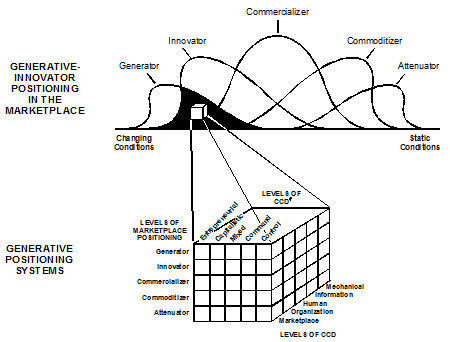
Figure 1. The Generativity Positioning and Processing System™
Representation in the Marketplace
The most critical function of this GPPS™ source cell is implementing The Requirements–Capacities Matrix: the capacities of the organization are compared against the requirements for Generative–Innovative Positioning in the marketplace. Clearly, Generativity Positioning is going to require the highest levels of New Capital Development to establish and continuously maintain positioning.
In GPPS™, the customer may select, from potentially an infinite array, those products that are (1) most closely tailored to meet the customer’s values, and (2) for which the customers are empowered by tailored capacities to meet the product’s requirements for managing.
For example, the customer may view electronic representations of all kinds of products—homes, cars, equipment—via Computer-Assisted Design. The customers may then select and “tailor” those products to meet their needs.
The generative marketplace of the future will be driven by The Generativity Solution—the generativity of breakthrough initiatives and architectural designs (see Figure 2). Anything of value that can be conceived can be achieved in Generativity Positioning and Processing Systems™ of New Capital Development.
- MCD or Continuous Marketplace Positioning for Comparative Advantage.
- OCD or Continuous Organization Alignment with Marketplace Positioning;
- HCD or Generative Human Processing to implement Organizational Alignment;
- ICD or Schematic Information Modeling to reflect Generative Human Processing;
- mCD or Operational Mechanical Tooling to implement Schematic Information Modeling.
The actual design and assembly of the products will be “farmed out” to “MOHIMs” for the New Capital Development Systems, just as OEMs or Original Equipment Manufacturers currently organize their production efforts.
The paradigm shift to GPPS™ requires that all NCD Components contribute to the substance of the products being produced and delivered. The criteria of measurement revolve around increasing the “size of the pie” rather than redistributing the “sizes of the pieces.”
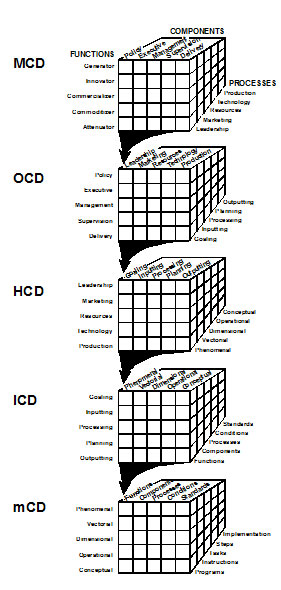
Figure 2. New Capital Development Systems
In this context, we will have once again placed Americans back in the leadership role:
- The American learners with expansive acquisition of operational knowledge and skills;
- The American workers with elevating levels of applications and transfers in producing products and delivering services;
- The American entrepreneurs with escalating levels of ideational generativity and “commanding heights” positioning generating wealth;
- The American citizens with accelerating levels of enlightenment and participation in governance and politics;
- The American leaders with potentially infinite levels of continuous interdependent processing in all areas of policy-making.
In other terms, we will have a fulfillment of Human Generativity, reinvigoration of The New Capitalism, and a Renaissance of Possibilities Civilization.
Just as the organizational leaders on Main Street and Wall Street need to learn the ingredients of corporate growth, so do the national leaders in America need to learn the ingredients of “Real Socioeconomic Growth.”
Just as the underclass people marginalized by “The Cycle of Social Failure” need to learn how to become productive individually, so do those marginalized by “The Cycle of Financial Failure” need to learn to perform productively and profitably in our times.
Rather than to pit Main Street versus Wall Street versus Constitution Avenue, we must all learn to become generative in entrepreneurial ways where each grows so that all have the opportunity to grow.
In transition, The Generativity Solution empowers us to solve all human crises. The Generativity Solution is “The Human Solution.”
Community Capital Development
The Generativity Culture is built on the foundation of The Generative Community (see Figure 3). As may be noted, Community Capital Development (CCD) is developmentally and cumulatively the function of the components of The Generative Community. Just as we experienced culture shock nationally, so do communities experience culture shock locally. For example, while Springfield achieved the mission of The Generative Community in the 1970s and 1980s, it suffered the shock of losing its cultural “cellular bonding tissue” in the 1990s and 2000s.
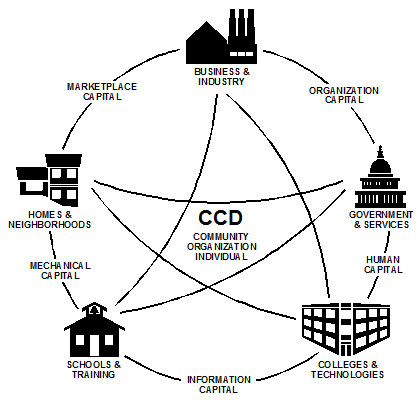
Figure 3. Community Capital Development (CCD)
Cultural Capital Development
Just as the community is a network of organizations within which networks of people function, so is the culture a network of communities (see Figure 4). These cultures are enduring communities which are held together by shared values. In the cases of cultures, the successful cultures around the world share the Freedom Functions. For example, while American culture was on the verge of fulfilling the Freedom Functions in 2000, it went into free-fall with the introduction of Totalitarian Socialism over the past decade.
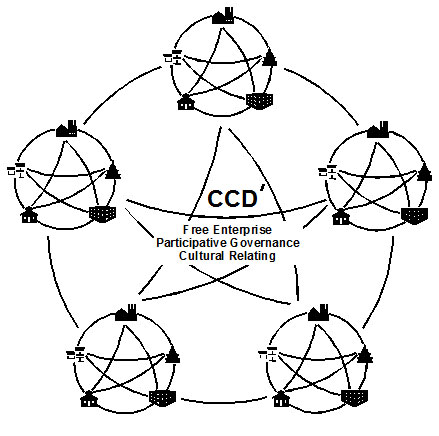
Figure 4. Cultural Capital Development
Economic Capital Development
The culminating image of socioeconomic growth is that of Economic Generativity (see Figure 5). Just as culture is comprised of networks of communities, so are economies comprised of networks of cultures that share a common vision or mission. For example, while America’s economic prosperity has stalled over the past few years, it now has the generativity positioning and processing systems to reignite its flight toward potentially infinite prosperity.
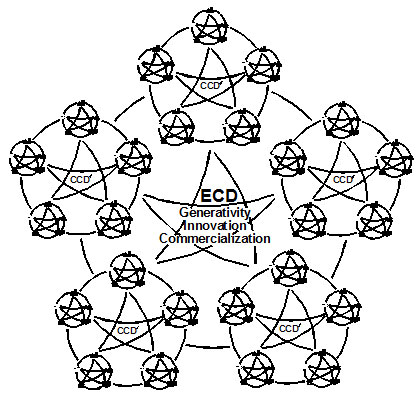
Figure 5. Economic Capital Development
High performances on our Economic Generativity Functions yield high returns in the “Pillars of Civilization:”
- Generativity which generates breakthrough ideas;
- Innovation which innovates marketplace transfers;
- Commercialization which maximizes product values and profits.
Together, these goals define the mission of Economic Capital Development or ECD.
The issues of supply-side and demand-side economics fade with the simultaneous courses of Economic Capital Development: We must build our New Capital inductively through our communities (CCD) to our cultures (CCD’), even as we are generating our ideas and architectures deductively from our economic positioning (ECD).
In the final analysis, the recession of 2008–2012 may be the best of all conditions for America, its citizens, and workers. The advanced capitalist nations will weather the financial cri¬sis better than the less mature countries. This is because capitalism, itself, is “a theory of change:” whatever ingredients are most important to our prosperity are incorporated into the wealth-generating equation.
Having lost their way, Americans now have the opportunity to re-examine their values and define the requirements to accomplish these values. Are we consumers or producers? Can we return again to the generativity that made us great? Are we still worthy of the leadership role?
The generative direction is the New Capital ingredient in the economic equation. We can create our way out of any hole, no matter how deep. Moreover, we can generate a great new economy of abundance, where it is a privilege to live, learn, and, above all, work.
The overriding economic question is this: are we going to assume the economic conditions of stasis which have overtaken us over the last few decades? If so, then teach your children Mandarin and prepare them for a second-class commoditized consumer existence!
Or are we going to dedicate ourselves to the economic conditions of change—continuous change—where we generate the very conditions within which we operate? If so, then teach your children American and prepare them for a first-class generative producer existence!
In summary, Generativity is “The New Wealth of Nations.”
Generativity is the path forward for Americans.
Hopefully, others will follow.
